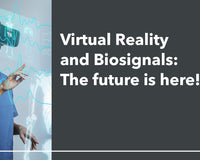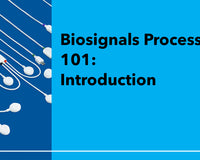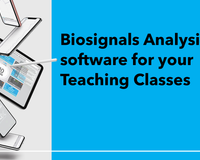Integrating biosignals into driving simulators is leading to significant improvements in driver safety and vehicle automation.
Biosignals like heart rate, skin conductance, and respiration provide valuable insights into a driver's mental and physical state. This information is crucial for creating systems improve driving performance and ensure that drivers remain alert and responsive, especially in critical situations.
Whether it's for testing new driver-assistance systems or understanding human factors in conditionally automated vehicles, the use of biosignals in driving simulators is transforming how we approach road safety and vehicle design.
This article presents three use cases of biosignals-powered driver research that are shaping the future of driving, making it safer and more efficient.
Predicting Driver's Mental Workload
The study "Predicting Driver's Mental Workload Using Physiological Signals: A Functional Data Analysis Approach" examines the impact of advanced driver-assistance systems on drivers' mental workload. It uses various physiological signals, including Electrocardiography (ECG), Electromyography (EMG), Electrodermal Activity (EDA), and Electroencephalography (EEG) sensor data, to predict and categorize mental workload levels in different driving scenarios.


Research setup in the driving simulator
The experimental setup involved a driving simulator with 41 participants who completed tasks designed to induce different levels of cognitive demand. Physiological data were collected using biosignalsplux and other equipment, while participants also provided subjective mental workload ratings. By using functional data analysis (FDA), the study avoided the complexities of feature engineering, allowing for more direct and accurate workload assessment.
The results highlighted that combinations of three or more physiological signals, particularly those including ECG and EEG, were most effective in predicting mental workload. The functional linear regression model demonstrated high accuracy and interpretability, making it a promising tool for understanding and optimizing driver-assistance systems.
This study highlights the potential of using physiological signals and advanced data analysis methods to improve driver safety and performance by accurately monitoring mental workload in real-time.
Find out more about this research here.
Biosignals-Assisted Driver State
Researchers from various swiss universities, led by Marine Capellera, introduced the AdVitam system, designed to increase driver situation awareness and improve takeover quality in conditionally automated vehicles.
The AdVitam system adapts information conveyed to the driver based on the driving environment and the driver’s physiological state, monitored using Electrocardiography (ECG), Electrodermal Activity (EDA), and respiration sensors. It consists of three connected modules: the Driver State module, which predicts the driver's state using physiological signals and machine learning; the Supervision module, which uses multimodal interfaces (haptic seat, personal device, ambient lights) to maintain situation awareness; and the Intervention module, which selects the best modality (haptic, auditory, visual) for takeover requests to optimize response quality.

The system was evaluated in a study involving 35 drivers in a fixed-base driving simulator, testing the modules in rural and urban driving environments. Results showed that providing environmental information through multimodal interfaces increased drivers' situation awareness and trust in the automated vehicle, though it did not significantly improve takeover quality. The Driver State module produced consistent predictions aligned with experimental manipulations.
This research showns that adaptive multimodal systems can improve driver situation awareness and trust in automated vehicles, contributing to safer and more effective human-vehicle interactions. The study suggests further refinement to improve takeover quality and address the challenges in conditionally automated driving scenarios.
Learn more about this research project here.
Contactless Heart Rate Extraction
Researchers at the University of Toyama (Japan) recognized the need for contactless heart rate extraction, as traditional methods struggle with noise and interference and are impractical in situations where subjects are unlikely to wire themselves up, such as drivers in cars.
The researchers used a 24-GHz continuous-wave Doppler radar to capture data in both stationary and driving simulation environments. The study combines Non-Harmonic Analysis (NHA) for frequency analysis and semantic segmentation for accurate heartbeat detection, significantly improving the clarity and precision of the results. NHA processed the radar data, generating time-frequency images that were then classified using pre-trained neural networks, including SegNet, U-Net, and DeepLabv3+. The results showed high accuracy in isolating heartbeat components in a resting state and reasonable accuracy even in noisy dynamic conditions, such as during a driving simulation.

Position of the radar-based heart rate extraction system (source: research paper)
In addition to the wireless method, the researchers used a Respiration sensor and an Electrocardiography (ECG) system to collect accurate physiological data from the subjects. This data served as a benchmark for validating the Doppler radar's performance, ensuring the reliability of the new method by comparing it against established biosignalsplux sensor data.
This study demonstrates a significant advancement in non-contact heartbeat detection, making it more accurate and reliable for practical applications. The researchers suggest further refinement to improve robustness, particularly in noisy environments, to boost the efficacy of non-contact monitoring systems.
Find out more in the researcher’s publication here.
Conclusion
By leveraging the power of biosignals in driving simulators, we can significantly increase driver safety and vehicle automation. These advancements are paving the way for a safer and more efficient future on the road.
Have questions? Contact the Biosignals Expert Team directly for personalized advice here.










